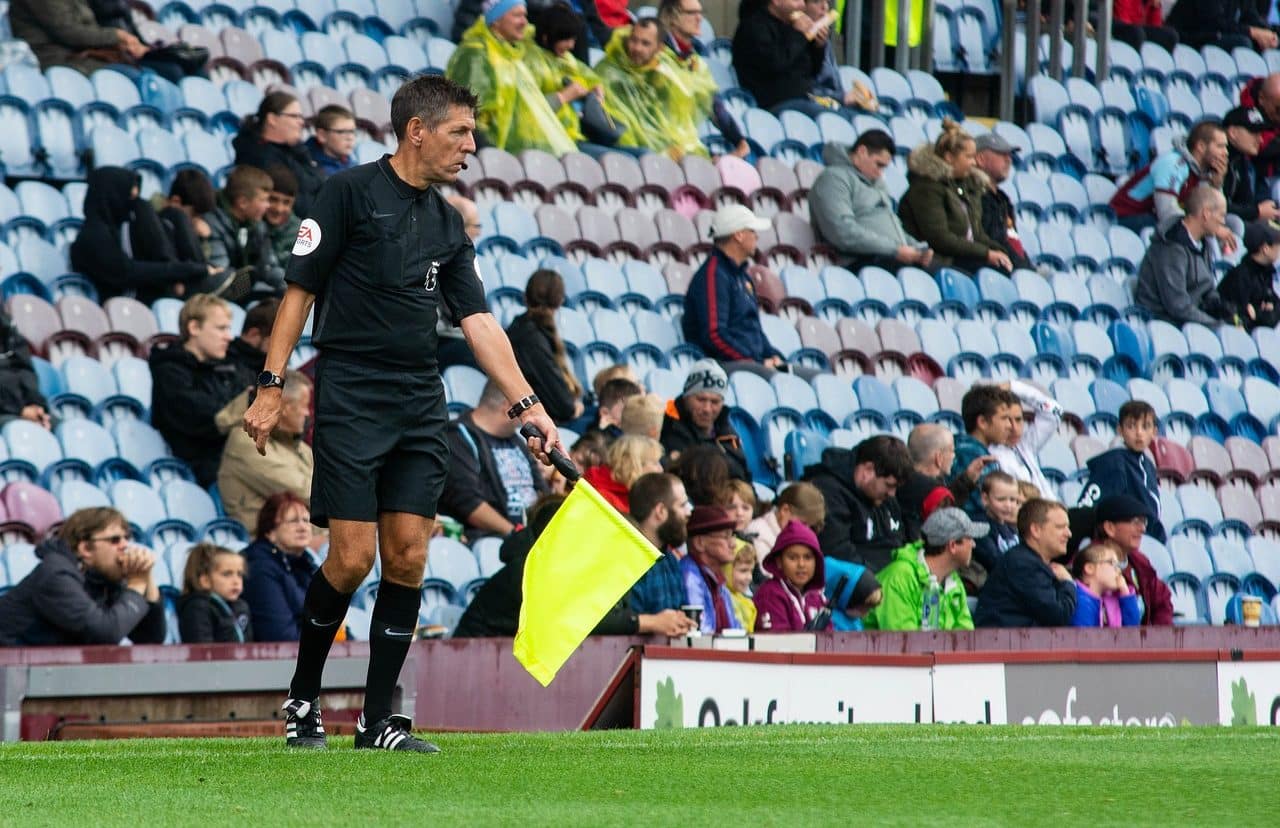
Offside is also mentioned as offside or offside.
Offside is the name by which a rule applied in football is known. Also known as offside or offside position , it sanctions a player who, within the framework of an offensive situation, is in a position considered illegal .
It is difficult to explain how this rule works, since it is linked to various specific circumstances and dynamics of the game . At a general level, it can be said that an attacker is offside when he only has the rival goalkeeper in front of him facing the opponent's goal and the ball is behind his position. If the player is behind the midfield line, he will be automatically enabled.
When does offside occur?
In short, if a teammate passes the ball to him and the attacker, when passing the pass, barely has the rival goalkeeper as an obstacle, he will be offside, which invalidates the play. Said violation of the regulations is signaled by the assistant referee or linesman , who will raise the flag to warn the main referee about the offside position. Once the infraction is sanctioned, the team that was defending until then has a free kick in its favor.
It is important to note that the offside player will only commit an offense when he tries to participate in the game or obtain an advantage from his forward position . This means that, if a striker is offside but his teammates do not pass him the ball, he will not have committed a foul against the regulation.

The linesman or assistant referee has the responsibility of marking the offside.
Purpose of the rule
The purpose of offside is to prevent a striker from remaining stationed next to the opponent's goal the entire game . Over the years, however, the sanctioning criteria were modified until they reached their current form.
To enforce this rule, the referee relies heavily on his assistant referee, who generally stands in a position parallel to that of the penultimate defender on the side of the field to which he has been assigned. The assistant referee has a difficult task, since he must pay special attention to attacks and counterattacks, evaluate who is offside each time the ball is played (even if they are at the opposite end of the court) and decide if said play involves to players who are offside.
Without a doubt, offside refereeing carries a significant risk of error, which is amplified by the perspective effect, which occurs when the assistant referee is not in line with the defending player and his distance from him is very close. different from that existing between him and the attacking player. Added to this is the speed that professional players can reach in just a few seconds, which can alter their position significantly in a very short time. In general, the public does not appreciate this difficulty in detecting offside.
The offside tactic
Although offside is a punishable situation that occurs due to an error by the attacking player, it can also be used as a defensive tactic. Also known as closing spaces , the offside tactic consists of the defenders moving forward in a synchronized manner when an attacker is about to receive a pass, so that he is located behind them when receiving the ball, which automatically becomes in an infraction.
Very commonly, defenders who use the offside tactic seek to attract the attention of the assistant referee with signs or shouts when they are about to execute their plan, so that the offside can be properly detected. Among football fans there is the idea that the use of this deceptive tactic makes this sport boring and predictable, although this does not mean that it is a risky decision, which can fail and give a considerable advantage to the attackers.
